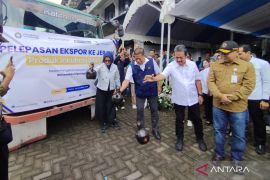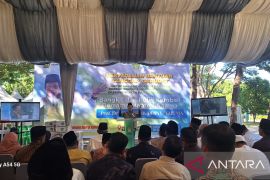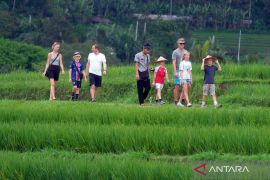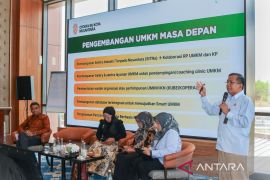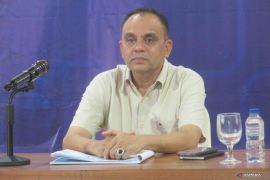"The three cutting tools consist of two stone hammers and a cutter. The three tools were found on Saturday (11 Feb) along with other findings from an ancient bison scapula," the head of Yogyakarta Archaeological Center Siswanto said.
He noted that the findings were estimated to be 750,000 years old. The materials used to make the stone cutters came from limestone, while the rock used to make a stone hammer was andesite, Siswanto explained.
According to Siswanto, the findings are the result of a group of excavations near the Terban village hall office, along with findings from the Patiayam site in this village.
The excavations near Terban village hall were first conducted after a team of archaeologists from Yogyakarta were performing research work in Terban village, particularly at the Patiayam site.
Following identification of fossils at the Patiayam site in Terban village, the archaeologists from Yogyakarta said the site needed to be preserved, he said.
Siswanto hoped that the mapping of the fossils at Patiayam site would provide the academic basis to save the site from various types of damage, such as if the area is used as a quarry.
The week-long research, beginning Feb 7, includes a study to look for traces of past cultures, searching for fossils, as well as an excavation to determine and identify rock formations near the Terban village hall.
The results of these activities will be incorporated into a map to identify the distribution of fossils found in earlier years.
The number of personnel to be deployed include eight archaeologists from Yogyakarta, along with three local residents.
The fossils previously found at the Patiayam site consisted of Trigonochepalus Stegodon (ancient elephant), Elephas Sp (a different variety of ancient elephant), as well as Cerrus Zwaani and Cervus Lydekkeri Martin (a species of deer), and Rhinoceros sondaicus (Rhino).
The other collections include Brachygnatus dubois (pig), Felis Sp (tiger), Bos Bubalus Palaeokarabau (bison) and Bos banteng alaeosondaicus and Crocodilus sp (crocodile).
Also found at Patiayam site in November 2007 was an elephant`s leg, broken ribs from an ancient buffalo, elk teeth and bones, ribs, and leg bones from buffaloes.
Officials said a number of local residents have also found fossils in Patiayam mountains, especially farmers who worked in the fields near the mountains.
In March 2010 the local community also presented 38 fossil found in Patiayam site to the Culture and Tourism office of Kudus district.
The fossils included elephants, buffaloes, bisons, deer, and rhinoceros.
(T.KR-LWA/INE/A014)
Editor: Priyambodo RH
Copyright © ANTARA 2012

